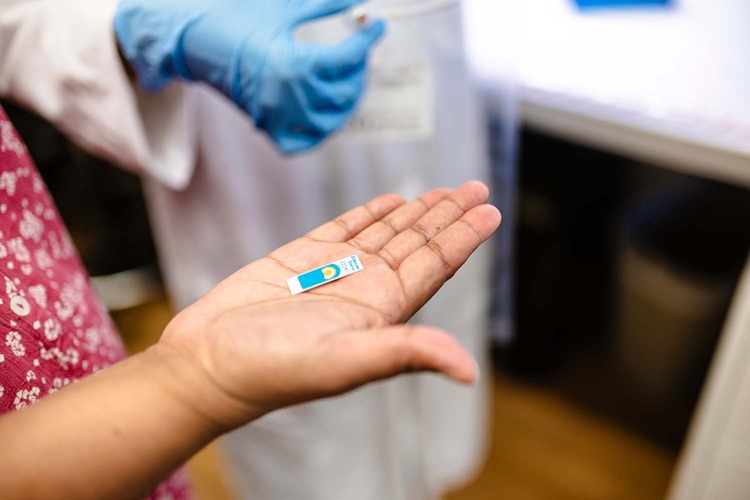Cancer Tissue Handling Needs Freezing Adaption
By LabMedica International staff writers
Posted on 14 Jan 2013
Traditional specimen handling methods for diagnosing cancer are hampering the introduction of genetic sequencing technology as a routine laboratory procedure. Posted on 14 Jan 2013
Tumor tissue obtained through a biopsy is fixed in formalin, and embedded in paraffin for microscopic viewing, but the chemical mixture damages DNA, so sequencing tissue processed in this way can be difficult, if not impossible.
Scientists at the Scripps Translational Science Institute (La Jolla, CA, USA) have suggested that a better alternative is to routinely freeze a portion of the specimen, which retains the tissue's genetic coding while preserving it for future analysis. In order to have enough tissue to freeze, larger or additional biopsy samples may be required, especially when using minimally invasive needle biopsy procedures.
Although complete genetic evaluations of tumors might require higher sample-storage costs and a more invasive biopsy procedure, most patients would likely agree to that option if it translates into a better diagnosis and possible treatment. Evidence of such benefit should come from randomized clinical trials that compare detailed genetic evaluation of tumor tissue with the current standard of care for cancer patients.
Genetically guided cancer therapy is an established procedure for the treatment of malignancies. This is especially true where identifying mutations by genotyping of the human epidermal growth factor receptor 2 gene (HER2) in breast cancer or the proto-oncogene B-Raf gene (BRAF) in melanoma, may alter the chemotherapeutic regime. The level of crucial detail is only possible with whole genome and exome sequencing from frozen tissue.
Eric J. Topol, MD, a cardiologist and one of the authors, said, “Deciding how best to obtain tumor samples and how best to process them for whole genome or exome sequencing is a pivotal yet unresolved issue with several layers of complexity. We need to completely rethink the way we have collected and stored cancer tissue samples for decades. It’s becoming increasingly clear that obtaining an accurate map of a tumor's DNA can be the key to determining the specific mutations that are driving a person's cancer, how best to treat it and how likely it is to recur." The article was published on January 2, 2013, in the Journal of the American Medical Association (JAMA).
Related Links:
Scripps Translational Science Institute









 assay.jpg)




